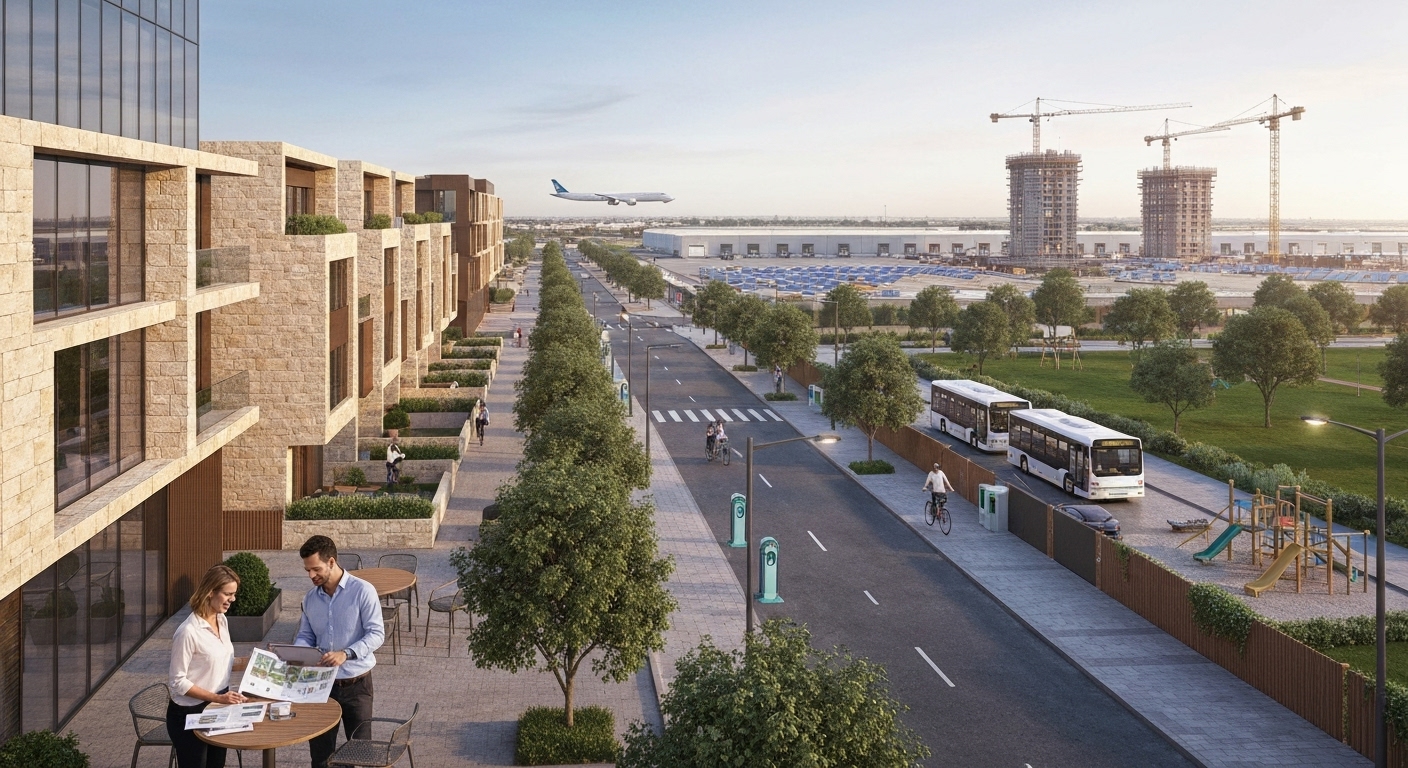When considering the downside of buying property in emerging areas like Dubai South, investors and first-time buyers need to balance the potential for high returns with the risks particular to a rapidly developing zone. This article addresses the most critical challenges, directly answering what to watch for when evaluating property investment in Dubai South, while giving practical strategies to help mitigate those risks.
Understanding Dubai South: An Emerging Investment Landscape
Dubai South stands out as a key growth corridor for residential and commercial projects, largely due to its strategic proximity to Al Maktoum International Airport and the Expo City district. While the area offers strong long-term appreciation potential, investors must remember that emerging locations carry unique risks, particularly related to oversupply and fluctuating demand.
Sub-communities in Dubai South have experienced periods of rapid inventory build-up, causing property price corrections of 7–12% in certain segments. This reflects the region’s vulnerability to shifts in the supply-demand dynamic, where aggressive new project launches can put downward pressure on resale values. Comparing Dubai South with mature neighbourhoods shows that while the entry threshold may be lower—sometimes from AED 290,000—property values here can be more volatile, leading to less predictable capital growth over the short- to medium-term.
Navigating Market Volatility and Unpredictable Growth
Investing in emerging areas like Dubai South involves market volatility. The pace of development is often tied closely to infrastructure rollouts and large-scale events. For example, the International Expo boosted local demand but also led to surges in off-plan sales, resulting in heavier competition and pricing adjustments. Nearby areas such as Jumeirah Village Circle (JVC) and Business Bay have faced similar trends, where strong investor interest can quickly shift towards oversupply if absorption rates lag behind launch volumes.
In Dubai South, buyers also face the challenge of inconsistent build quality and handover standards, especially in projects with compressed timelines or from new-to-market developers. Construction delays, shifting payment milestones, and project scope changes have all impacted buyer experience, affecting both expected yields and occupancy timelines.
Infrastructure Development: The Double-Edged Sword for Emerging Areas
The evolution of infrastructure in Dubai South can significantly influence property values—but often with a lag. While improved road networks, metro links, and new amenities ultimately add to an area’s attractiveness, the timing of these enhancements isn’t always predictable. Delays in promised infrastructure or extensions can dampen rental demand and reduce owner occupancy, leaving properties vacant for longer periods.
Conversely, rapid infrastructure progress can lead to speculative buying, inflating prices in the short term before genuine end-user demand materializes. This dynamic makes it harder to forecast long-term appreciation and rental stability compared to established districts.
The ‘Off-Plan’ Predicament: Risks of Delays and Project Changes
A notable risk in Dubai South is off-plan investment. Buyers may encounter unexpected delays, changes to project scope, or even requests from developers to restructure payment plans mid-way through construction. These factors can disrupt investment cash flows and extend the time frame before renters or end-users can occupy the property. Additionally, early investors sometimes face deferred access to advertised amenities, eroding the project’s value proposition until all deliverables are complete.
Operational Costs and Hidden Fees: Beyond the Purchase Price
Beyond the initial purchase, investors must account for operational costs unique to Dubai and, specifically, to emerging areas. Annual service charges, maintenance, and potential hidden fees can erode rental yields, especially in buildings where occupancy levels are not yet optimal. For expats, broader costs such as international school fees (often ranging from AED 40,000 to 60,000 per year) and health insurance must also be factored in to understand the complete cost profile of investing or residing in Dubai South.
Regulatory Landscape and Ownership Considerations in a Developing Zone
Emerging areas like Dubai South also carry regulatory evolution. Zoning changes, updates to residence visa qualifications, and changes to foreign ownership structures may be introduced as the district matures. While Dubai is considered relatively robust in its legal protections, gaps occasionally occur in new project launches, particularly regarding handover timelines and homeowner association governance. Prospective buyers should carefully review contracts and seek impartial legal guidance before committing.
Mitigating Risks: Strategic Approaches for Dubai South Investors
Prudent investors can manage risk by focusing on reputable developers with a track record of timely delivery and clear communication. It is advisable to prioritize projects demonstrating ongoing infrastructure progress and occupancy growth—not just speculative investor demand. Engaging in thorough due diligence, understanding operational costs, and consulting with local real estate experts can help ensure that any downside of buying property in emerging areas like Dubai South is minimized.
In summary, while Dubai South offers compelling opportunities for capital appreciation and rental yields, buyers must recognize the downside risks inherent to emerging markets: supply fluctuations, infrastructure uncertainty, and regulatory evolution. Strategic planning and informed investment decisions can help turn these challenges into long-term strengths. For detailed guidance on current opportunities and risk mitigation in Dubai South, contact Danube Properties to learn more.




